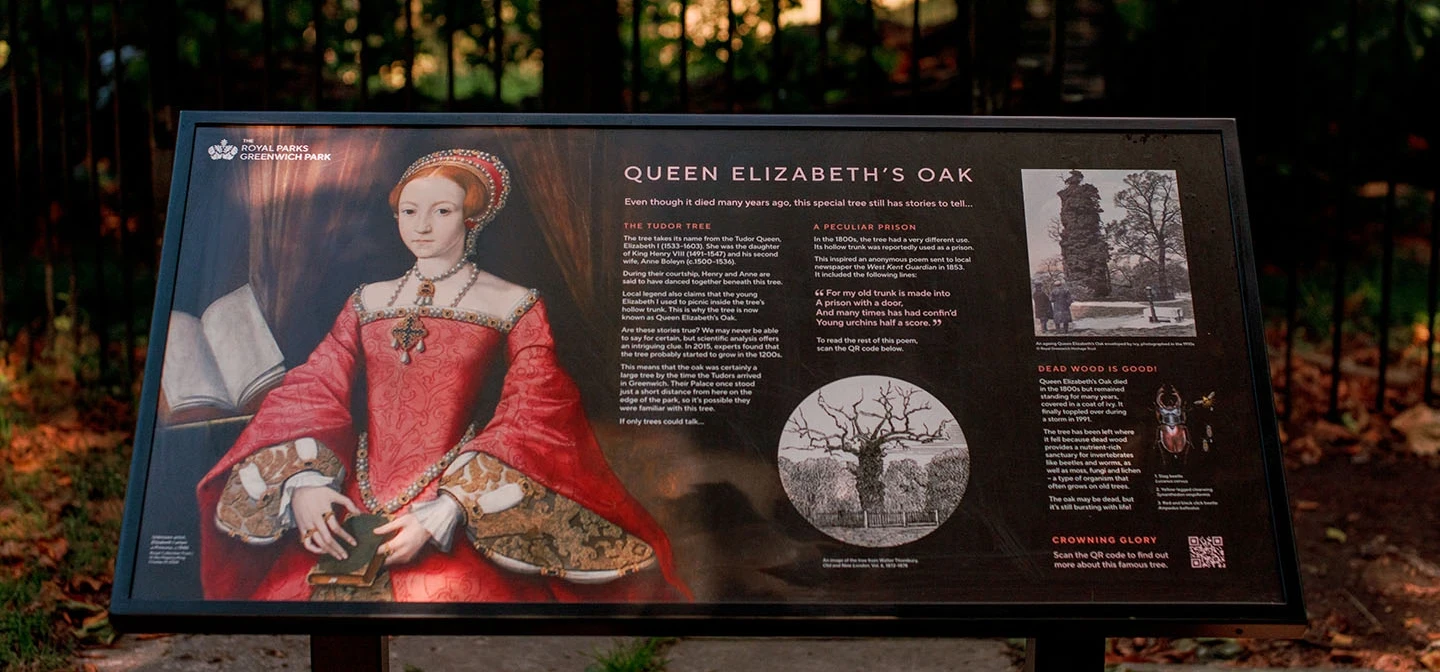
History of Greenwich Park
Key information
Home to the ruins of a Roman temple, a curious Anglo-Saxon cemetery and the world-famous Royal Observatory.
Greenwich Park’s early history
Greenwich Park has been settled since Roman times, and in the south of the park you can see the traces of an ancient Roman temple, excavated in 1999. The park was also an important space for Anglo-Saxons who chose this land to bury their dead – over 30 of their distinctive circular burial mounds can still be seen to the west of the park.
But ever since the land was inherited in 1427 by Humphrey, Duke of Gloucester – brother of Henry V – generations of British monarchs have taken this magnificent park into their hearts.
The creation of a Royal Park at Greenwich
Humphrey enclosed the Park in 1433 and built a tower on the site of what is now the Royal Observatory. When he died in 1447, Margaret of Anjou, the wife of King Henry VI, seized the estate and renamed it the Manor of Pleasance or Placentia.
Greenwich Park and the Tudors
King Henry VIII was born at Greenwich in 1491– and it was he who introduced deer to Greenwich Park. King Henry married his first and fourth wife at Greenwich, and his two daughters, Mary I and Elizabeth I were also born here. His only legitimate son, Edward VI, died in Greenwich, just before his sixteenth birthday.
Greenwich Park and the Stuarts
In the 1600s, the Stuarts transformed the park. King James I replaced the fence around the park with a brick wall double a man’s height – much of which still exists.
King James gave the palace and the neighbouring park to his wife, Queen Anne – allegedly as an apology for swearing at her in public when she accidentally shot one of his favourite dogs! In 1616, Queen Anne commissioned Inigo Jones to design her a special home – the Queen's House. Today, the Queen’s House houses a rare collection of Royal portraits, including works by Gainsborough, Hogarth and Turner.
King Charles, Andre Le Notre, and The Grand Plan for Greenwich
In the 1660s, King Charles lI commissioned the famous Andre Le Notre, gardener to Louis XIV of France, to design a bold new landscape for Greenwich Park. Le Notre’s ‘Grand Plan’ created a formal layout of tree avenues framed by banked landscaping that can still be seen today, 350 years later.
We are currently in the midst of our own ‘Grand Plan’ to restore these extraordinary avenues and ‘parterre banks’. Discover more about the project Greenwich Park Revealed here – we welcome volunteers!
Greenwich Park and the Stuarts – celebrating invention, adventure and discovery.
King Charles II was a keen supporter of scientific research, and he commissioned Sir Christopher Wren to build the Royal Observatory, naming it Flamsteed House after the first Astronomer Royal, John Flamsteed.
Greenwich Park’s Royal Observatory is one part of a UNESCO World Heritage Site.
The 1800s – Greenwich Park was opened to the public
Greenwich Park's royal star began to wane in the 1700s and James II was the last monarch to actually live at the Palace. The park was opened first to the veteran sailors housed at the imposing Greenwich Hospital close to the park, but by around 1830 all members of the public were welcomed too.
Greenwich in wartime
During the First World War, some of Greenwich Park was used for allotments, and people were allowed to continue growing their own even after the war ended.
The park was home to three air raid shelters during the Second World War, providing protection for hundreds of local residents. During the long hot summer of 2019, 26 Royal Parks volunteers and professional archaeologists discovered the main air raid shelter in front of the Queen’s House, almost entirely intact!